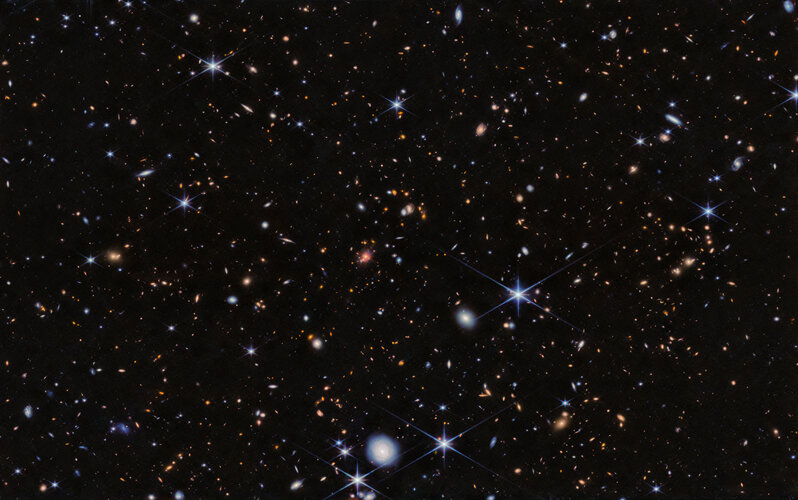
Astronomers explore galaxy populations and uncover their physical characteristics across large-scale structures to better understand the build-up of galaxies and how their environments shape their assembly. The Spiderweb protocluster is a well-studied object in the early Universe. Its light has travelled over 10 billion years to reach us, and it shows us a galaxy cluster in formation, composed of more than a hundred known galaxies.
With the use of Webb’s capabilities, astronomers have now sought to better understand this protocluster and to reveal new galaxies inside it. Infrared light passes more freely through cosmic dust than visible light, which is scattered by the dust. Because Webb can see well in the infrared, scientists used it to observe regions of the Spiderweb that were previously hidden to us by cosmic dust, and to find out to what degree this dust obscures them.
“We are observing the build-up of one the largest structures in the Universe, a city of galaxies in construction,” explained Jose M. Pérez-Martínez of the Instituto de Astrofísica de Canarias and the Universidad de La Laguna in Spain. “We know that most galaxies in local galaxy clusters (the biggest metropolises of the Universe) are old and not very active, whereas in this work we are looking at these objects during their adolescence. As this city in construction grows, their physical properties will also be affected. Now, Webb is giving us new insights into the build-up of such structures for the first time.”
With Webb, the team studied the hydrogen gas to reveal new, strongly obscured galaxies belonging to the cluster and to study how much they were obscured. This was accomplished using only about 3.5 hours of Webb’s observing time.
“As expected, we found new galaxy cluster members, but we were surprised to find more than expected,” explained Rhythm Shimakawa of Waseda University in Japan. “We found that previously-known galaxy members (similar to the typical star-forming galaxies like our Milky Way galaxy) are not as obscured or dust-filled as previously expected, which also came as a surprise.”
“This can be explained by the fact that the growth of these typical galaxies is not triggered primarily by galaxy interactions or mergers that induce star-formation,” added Helmut Dannerbauer of the Instituto de Astrofísica de Canarias in Spain. “We now figure this can instead be explained by star formation that is fueled through gas accumulating at different locations all across the object’s large-scale structure.”
The team is planning to study the (new) galaxy cluster members in more detail and confirm their existance with spectroscopic observations using Webb.



